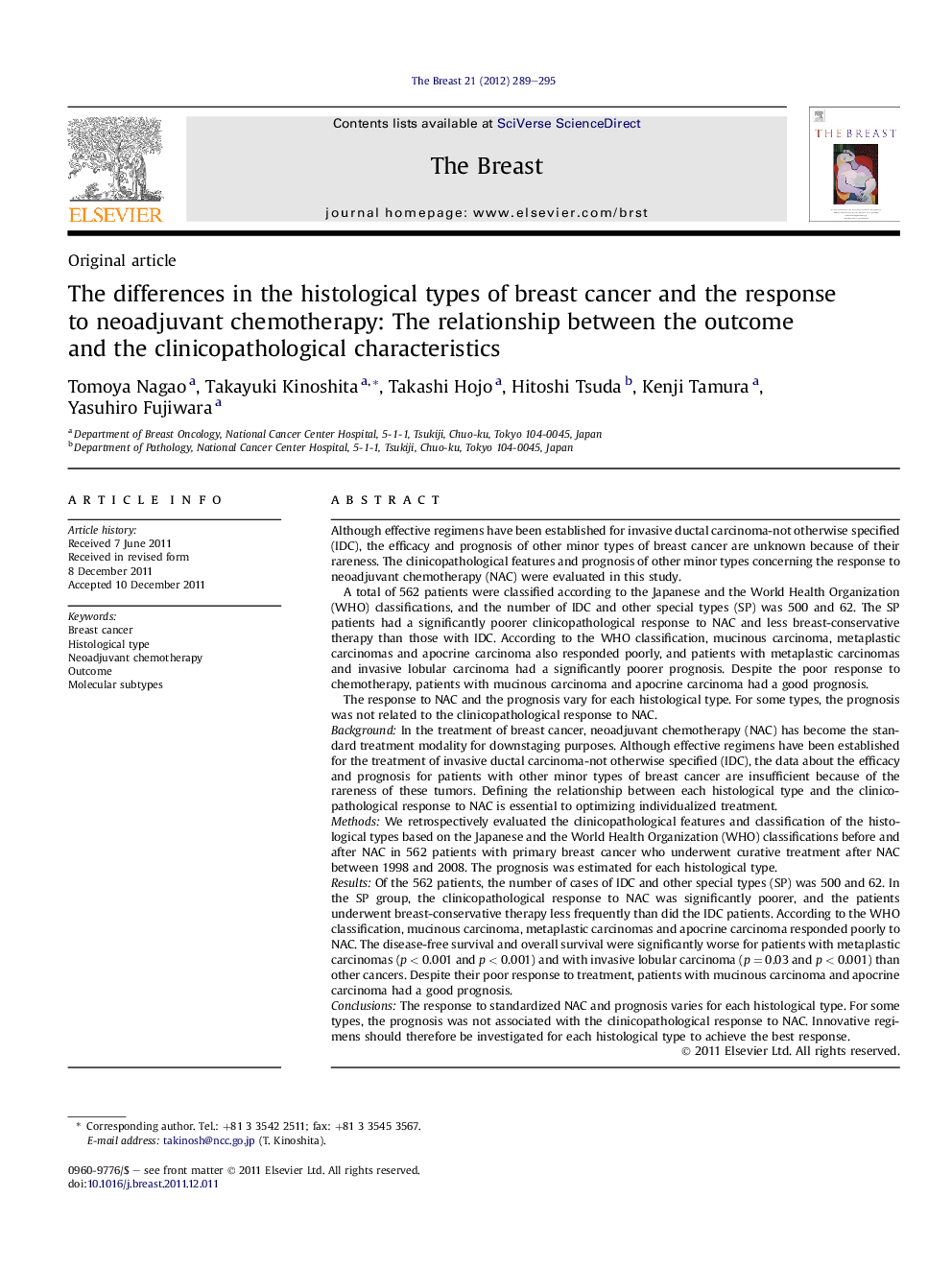| کد مقاله | کد نشریه | سال انتشار | مقاله انگلیسی | نسخه تمام متن |
|---|---|---|---|---|
| 3909012 | 1251201 | 2012 | 7 صفحه PDF | دانلود رایگان |

Although effective regimens have been established for invasive ductal carcinoma-not otherwise specified (IDC), the efficacy and prognosis of other minor types of breast cancer are unknown because of their rareness. The clinicopathological features and prognosis of other minor types concerning the response to neoadjuvant chemotherapy (NAC) were evaluated in this study.A total of 562 patients were classified according to the Japanese and the World Health Organization (WHO) classifications, and the number of IDC and other special types (SP) was 500 and 62. The SP patients had a significantly poorer clinicopathological response to NAC and less breast-conservative therapy than those with IDC. According to the WHO classification, mucinous carcinoma, metaplastic carcinomas and apocrine carcinoma also responded poorly, and patients with metaplastic carcinomas and invasive lobular carcinoma had a significantly poorer prognosis. Despite the poor response to chemotherapy, patients with mucinous carcinoma and apocrine carcinoma had a good prognosis.The response to NAC and the prognosis vary for each histological type. For some types, the prognosis was not related to the clinicopathological response to NAC.BackgroundIn the treatment of breast cancer, neoadjuvant chemotherapy (NAC) has become the standard treatment modality for downstaging purposes. Although effective regimens have been established for the treatment of invasive ductal carcinoma-not otherwise specified (IDC), the data about the efficacy and prognosis for patients with other minor types of breast cancer are insufficient because of the rareness of these tumors. Defining the relationship between each histological type and the clinicopathological response to NAC is essential to optimizing individualized treatment.MethodsWe retrospectively evaluated the clinicopathological features and classification of the histological types based on the Japanese and the World Health Organization (WHO) classifications before and after NAC in 562 patients with primary breast cancer who underwent curative treatment after NAC between 1998 and 2008. The prognosis was estimated for each histological type.ResultsOf the 562 patients, the number of cases of IDC and other special types (SP) was 500 and 62. In the SP group, the clinicopathological response to NAC was significantly poorer, and the patients underwent breast-conservative therapy less frequently than did the IDC patients. According to the WHO classification, mucinous carcinoma, metaplastic carcinomas and apocrine carcinoma responded poorly to NAC. The disease-free survival and overall survival were significantly worse for patients with metaplastic carcinomas (p < 0.001 and p < 0.001) and with invasive lobular carcinoma (p = 0.03 and p < 0.001) than other cancers. Despite their poor response to treatment, patients with mucinous carcinoma and apocrine carcinoma had a good prognosis.ConclusionsThe response to standardized NAC and prognosis varies for each histological type. For some types, the prognosis was not associated with the clinicopathological response to NAC. Innovative regimens should therefore be investigated for each histological type to achieve the best response.
Journal: The Breast - Volume 21, Issue 3, June 2012, Pages 289–295